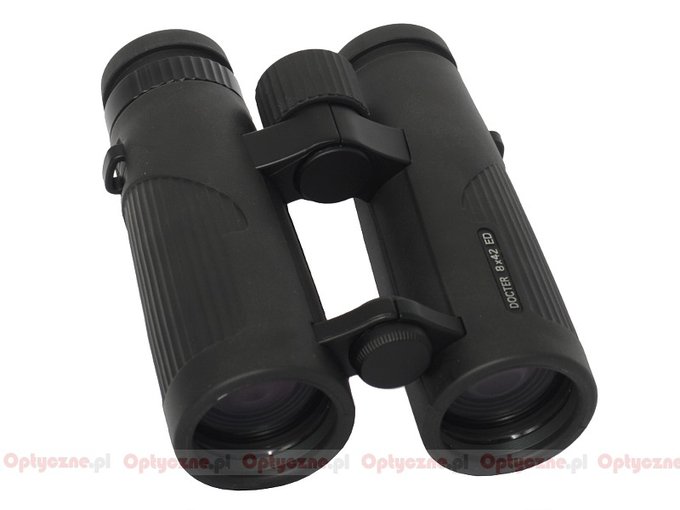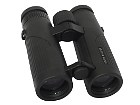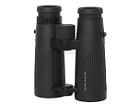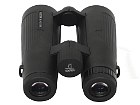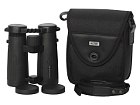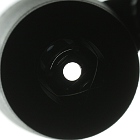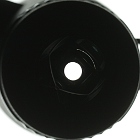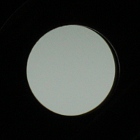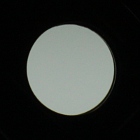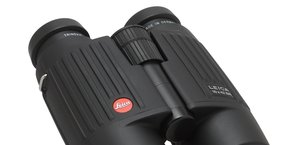Docter 8x42 ED
The binoculars come with standard parameters for instruments of this class: 8x42 and 10x42. Both devices are roof prism Schmidt-Pechan designs. According to the producer all air-to-glass surfaces were covered by high quality DOCTER®multitop antireflection coatings. The binoculars are also waterproof and nitrogen-filled.
| Magnification | Lens diameter | Angular field of view | Prisms | Eye relief | Weight | Price |
|---|---|---|---|---|---|---|
| 8 | 42 | 115/1000(6.6o) | BaK-4/Porro | 19.5 mm | 670 g | 3700 PLN |
Summary
Pros:
- very nifty, relatively light and solid casing at the same time,
- sharp image in the majority of the field of view,
- exceptionally low astigmatism,
- slight coma,
- decently corrected distortion,
- negligible brightness loss on the edge of the field of view,
- correct blackening and cleanliness of the binoculars,
- good quality of prisms,
- exit pupils on a nice, dark background,
- long guarantee period.
Cons:
- narrow field of view,
- noticeably truncated exit pupils,
- significant transmission decrease in the centre of the visible spectrum.
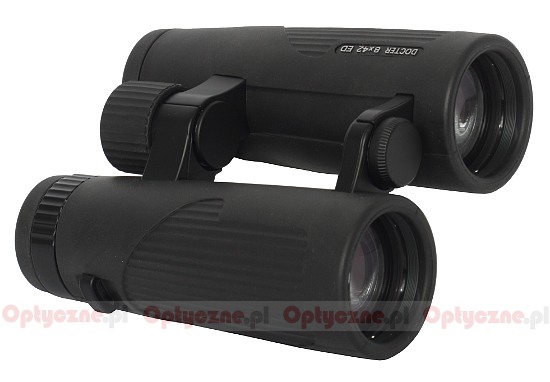 |
This test can be summarized in a similar way as the test of the 10x42 model. It is evident the designers of these binoculars focused on small dimensions and low weight of the equipment - the Docter looks very nifty and handy. Unfortunately it influences the dimensions of the prisms which make the exit pupils truncated.
In the case of the transmission, which graph is presented below, we can observe similar problems as in the case of the 10x42 model.
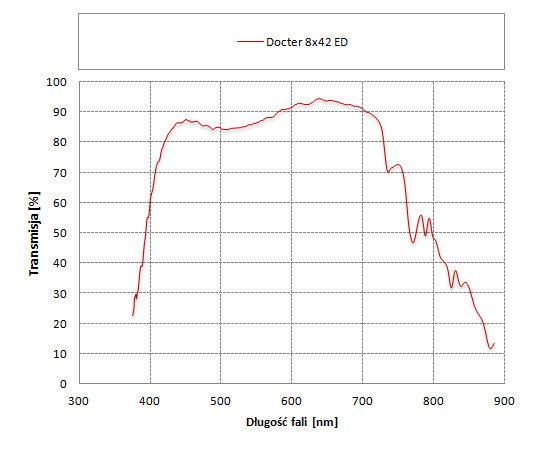 |
A significant decrease of the transmission for green light, observed here, could be perhaps tolerated in the case of a ~200 Euro roof prism instrument but it befits ill the reputable Docter, with a price tag of almost 1000 Euro. At such a price point we would like to observe transmission values exceeding 90% in the whole visible spectrum.
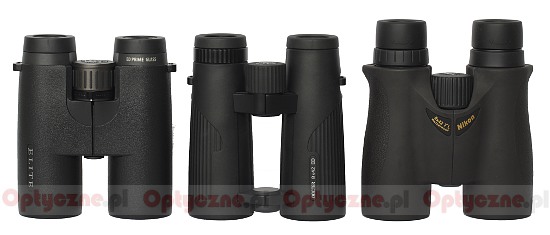 Bushnell Elite 8x42, Docter 8x42 ED and Nikon HG 8x42 DCF |
A worse result of the 8x42 model, compared to that of its 10x brother, stemms mainly from the field of view. In the case of the 10x42 equipment good quality eyepieces with an apparent field of view of 60 degrees were used. Here the producer was satisfied with less than 52 degrees so the binoculars boast a not exactly impressing field of view of 6.4 degrees. In the case of a good quality 8x42 model it would be good if the total field of view amounted to at least 7 degrees or more.
To keep the balance we must clearly state that we still deal here with a really good piece of equipment. A pair of binoculars which is able to get over 130 points in our tests cannot be a mediocre device. It is a pity, though, that buying such an interesting and not exactly cheap model, produced by a renowned German manufacturer, you still have to compromise. However if you decide to do so you get a handy, physically light instrument which corrects most of basic optical aberrations in an excellent way; it also comes with a long and reliable guarantee period.





